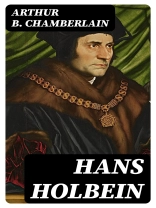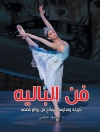In ‘Hans Holbein’ by Arthur B. Chamberlain, readers are transported back to the Renaissance period through a detailed exploration of the life and works of the renowned German artist, Hans Holbein the Younger. Chamberlain’s writing style is both informative and engaging, providing readers with a scholarly yet accessible account of Holbein’s significant contributions to the art world. The book delves into Holbein’s unique approach to portraiture, capturing the essence of his subjects with remarkable precision and depth. Chamberlain also sheds light on the cultural and artistic context of Holbein’s time, giving readers a greater understanding of the artist’s lasting influence. Arthur B. Chamberlain, a respected art historian, brings his expertise to ‘Hans Holbein, ‘ offering readers valuable insights into the life of this influential artist. Chamberlain’s passion for art history is evident throughout the book, making it a must-read for anyone interested in Renaissance art and the life of Hans Holbein. I highly recommend this book to art enthusiasts, historians, and anyone looking to delve deeper into the world of Renaissance art.
Yazar hakkında
Arthur B. Chamberlain was a notable author and critic who made substantial contributions to the study of European art history, with a particular emphasis on Renaissance works. Chamberlain’s scholarly work ‘Hans Holbein’ delves into the life and career of the eponymous German artist, known for his insightful and highly detailed portraits. Born in the late 19th century, Chamberlain was part of the intellectual milieu that sought to bring historical context to the study of art, emphasizing the intricate connections between an artist’s work and the socio-political tapestry of their times. His analysis of Holbein’s works extended beyond sheer aesthetics, exploring how the artist’s creations were influenced by and reflected the religious and cultural upheavals of the Reformation. Chamberlain’s literary style combines meticulous research with accessible prose, allowing both scholars and general readers to appreciate the depth and complexity of Holbein’s artistry. Moreover, Chamberlain’s interpretive approaches have contributed to the discourse on how individual biographies and historical contexts intertwine in the creation of art. His own biography, however, remains less documented, with his contributions primarily illuminated through his written legacy. Despite this, his expertise and intellectual rigor form a lasting part of the fabric of art historical literature.












